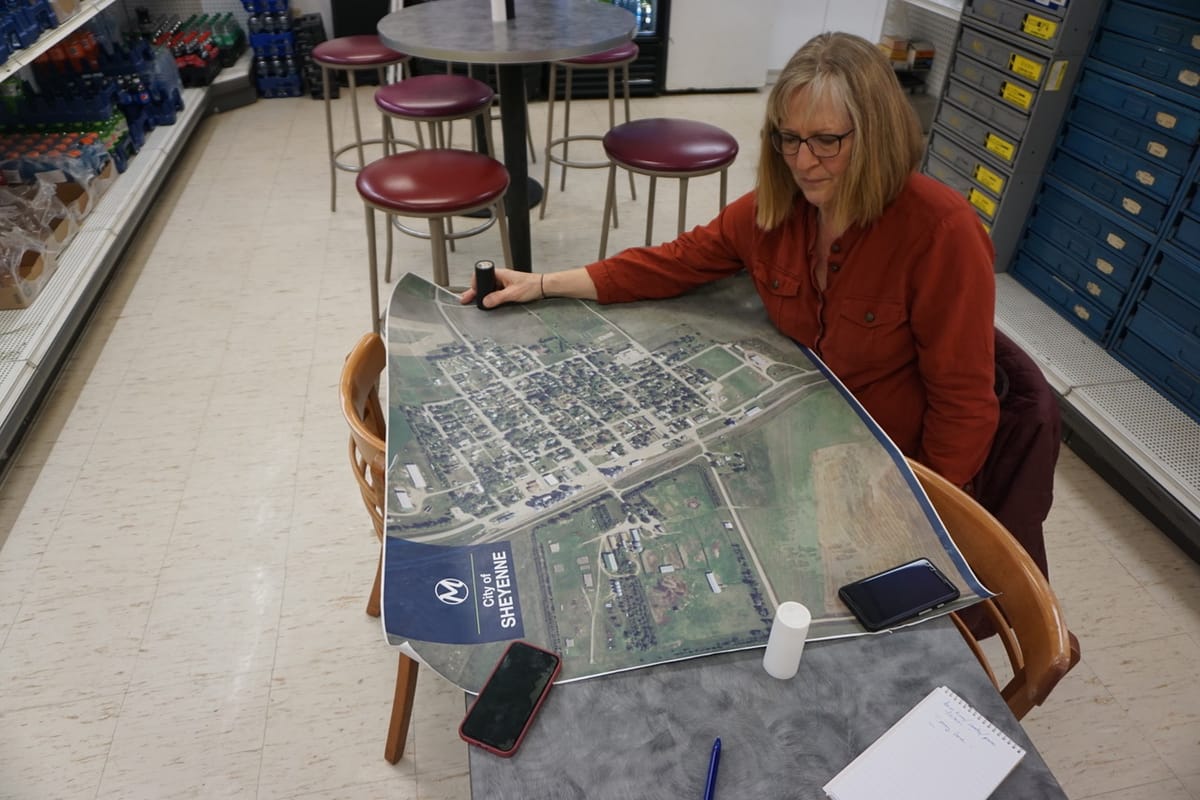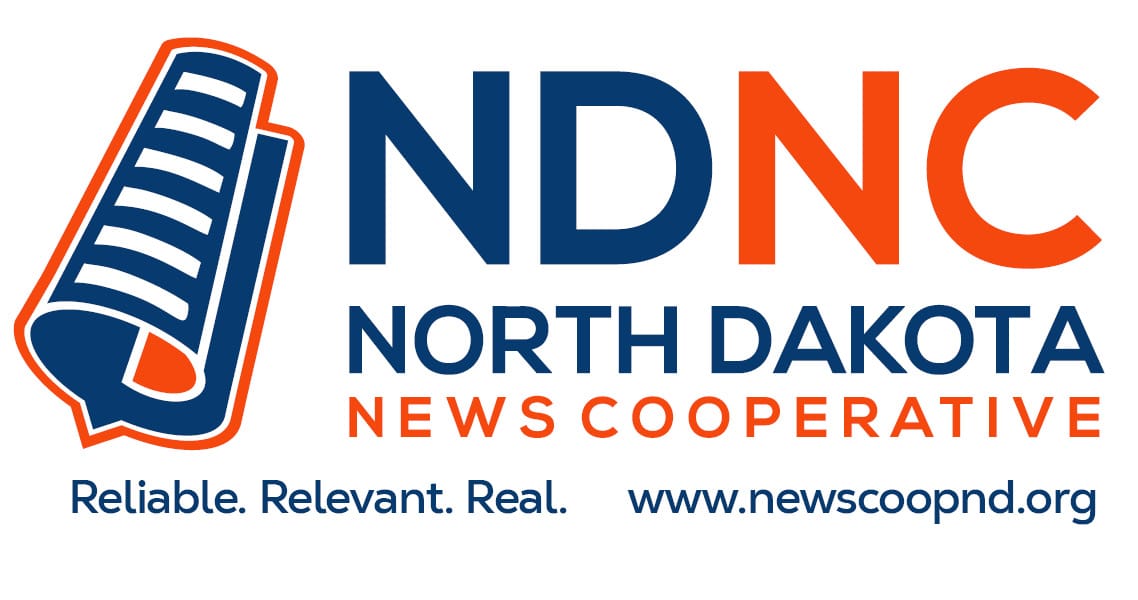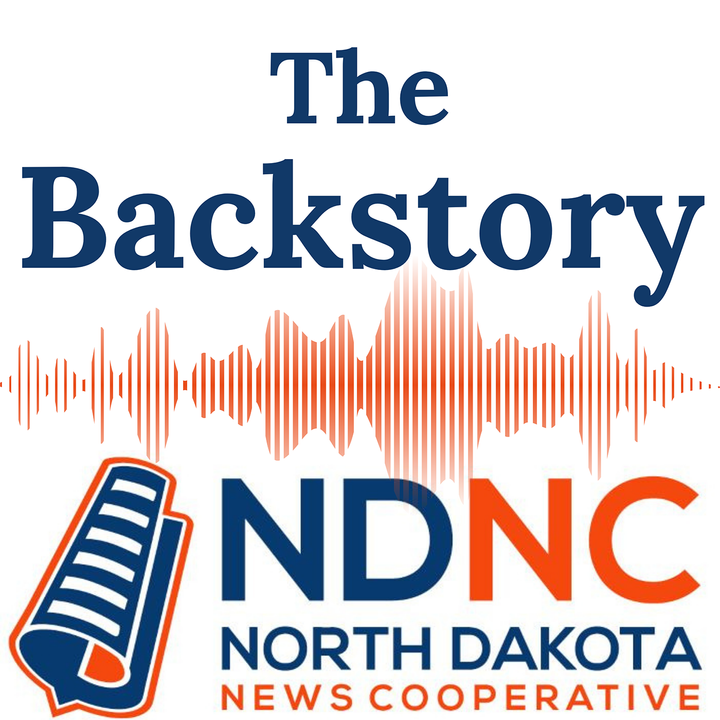Community leaders aim to catch influx of new Americans
Robust opposition expected

Patti Larson has many visions for Sheyenne. None of them include the town dying a slow death.
That is likely its fate unless the town’s demographics were to magically change. With two-thirds of its 185 residents over the age of 50, Sheyenne is indeed in its golden years.
Community leaders in Sheyenne and other towns are hopeful that they’ve found a way to slow or reverse that aging process, but they believe it will take an influx of new Americans to do so.
At the moment Sheyenne shows its age spots. There’s the Equity Co-op Elevator on Main Street that often needs workers. There’s Rindy’s Sheyenne Bar, for sale with few interested buyers, and Route 281 Repair and Convenience – one of the few options for a hot meal in town.
There’s not much else in this bedroom community perched between Devils Lake and Carrington, including much for food. There is a community orchard and gardens and a farmer’s market in the summer, but no grocery and no restaurant with regular hours.
Sheyenne is more vibrant when people are around, Larson says. Sitting on a slight rise above the surrounding plain, it dips down toward its namesake river to the north and Warsing Dam’s park and campgrounds. It is not hard to imagine better times when the now-closed school and two Lutheran churches were full of youth and families.
What it needs is people. People for the 18 homes that sit unused but not up for sale. Six more are dilapidated and probably should come down, potentially freeing up land for new builds. The area does need housing for teachers, cooks and bus drivers working at nearby New Rockford-Sheyenne Public School. Another 14 houses are occupied by part-time residents, either snowbirds, or hunters and fisherman in season. Only 13 of all 113 homes in town hold families of three or more.
“We have such nice people, but every time there’s a funeral, we know we’re shrinking down to fewer and fewer people, and if we don’t do something about it, it’ll be out of our hands,” Larson said.
While North Dakota saw a 7.4% increase in population between 2010 and 2020, that growth was primarily driven by larger metro areas, masking declines in rural areas. Sheyenne lost 8.8 percent of its population over that decade. Down the road, New Rockford declined by 2.1 percent and Carrington held steady.
Community leaders look for answers
Other community leaders like Larson in small towns scattered across the state – Bottineau, Harvey, Anamoose, Carrington, Steele to name a few – believe they have at least a partial answer to that slow shrinkage.
They’d like to position their towns to fill some of the 40,000 open jobs in North Dakota. That number – nearing the entire population of Minot – is both an opportunity and an obstacle for businesses that hope to expand and flourish. They want families, particularly families of legal immigrants who can fill those jobs, buy homes and make their towns vibrant again.
To that end, they’ve recently formed a non-profit called CATCH, which stands for Communities Acting Together for Change and Hope. It aims to hire an executive director to introduce communities to the concept.
“We have to get real about those two words – ‘change’ and ‘hope’,” said Bill Patrie, vice chair of the nine-member CATCH board of directors. “Do people actually want change? And what is it that they hope for? Those have to be real things and not just a slogan. You have to create an opportunity for people to act on what they honestly hope for.”
For Larson, CATCH’s treasurer, Sheyenne needs a carpenter, a plumber and an electrician. The idea is that those empty houses could be fixed up and resold to families who want to stay there, she says, immigrant or otherwise.
New Rockford needs workers, as does Carrington, a half-hour drive to the south. Because the worker shortage is regional and national, it’s not likely people will flock to North Dakota for work.
Carrington Mayor Tom Erdmann, one of the directors of CATCH, lists the businesses in his town that need workers. Dakota Growers Pasta Co. Inc. is one. A primary employer, it recently posted 19 openings, jobs that offer up to $20 per hour or more full-time, with sign-on bonuses up to $2,000.
“They have openings, all kinds of openings,” Erdmann said.
Another is Golden Acres Manor nursing home, which needs everything from registered nurses to housekeeping staff. Erdmann said the manor constantly struggles to fill staff, despite significant sign-on bonuses.
Similar stories abound at health care facilities across the state. Many have turned to obtaining work visas for foreign nurses, but the process is cumbersome and lengthy. Two-year waits or longer are common.
“We’ve reached out and have gotten some Filipino nurses, but it takes such a long time to get them here,” Belinda Moen, administrator of Bethel Lutheran Nursing & Rehabilitation Center in Williston, said. “I think we’ve worked on the four nurses we have now, and we have another one coming, for five years. That’s a long time to wait for a registered nurse to help you out. Five years.”
Like Sheyenne, available housing is an issue in Carrington, a town of a little over 2,000 population. Only five houses are currently up for sale there, and more are needed if nurses or workers for other area businesses are hired.
Expected opposition
So far, the CATCH group has held one initial community meeting in Bottineau and plans more soon. The group testified in favor of Senate Bill 2142, which passed the Senate by a vote of 39-5 in February and is now under consideration by the House.
The bill would establish a one-staff immigration office in the North Dakota Department of Commerce to help place legal immigrant workers throughout the state, and act as a go-between for immigrants, communities and businesses.
The group also supported SB 2151, which would have set up an office of immigration within the Bank of North Dakota, as well as a $10 million line of credit, with most of that going toward forgivable loans up to $120,000.
Despite some support, the bill was roundly criticized as unfair to local North Dakotans and failed to pass the Senate 40-4.
Members of CATCH now expect that federal and state grants, and local and private funding will be needed to fix up older homes, attract legal immigrant families, and help them integrate into smaller towns.
“It’ll be up to CATCH to advocate and facilitate foreign-born families moving to and living in rural areas,” Larson said. “It would be so great if the state would realize an immigration office. That would be so helpful, because I think they’re starting to realize we’re going to have to have people that aren’t born here, moved here.”
Larson expects there will be “mixed feelings here, where everyone isn’t all gung-ho” about the idea of resettling immigrant families in Sheyenne. Still, she believes it is vital to keeping the town viable for years to come.
Erdmann also knows there will be local opposition. He’s seen it before, particularly 15 years ago when some residents pushed back against Dutch immigrants setting up a dairy operation. All these years later VanBedaf Dairy is now a vital economic cog for the community and surrounding region.
“There's a whole faction around every community that says we don't want those people,” Erdmann said. “It looks like to me, to get this to happen, you’re going to have to get communities and private donations and these ‘GoFundMe’ type of programs out there for immigration.”
The North Dakota News Cooperative is a nonprofit news organization providing reliable and independent reporting on issues and events that impact the lives of North Dakotans. The organization increases the public’s access to quality journalism and advances news literacy across the state. For more information about NDNC or to make a charitable contribution, please visit newscoopnd.org. Send comments, suggestions or tips to michael@newscoopnd.org. Follow us on Twitter: https://twitter.com/NDNewsCoop.



